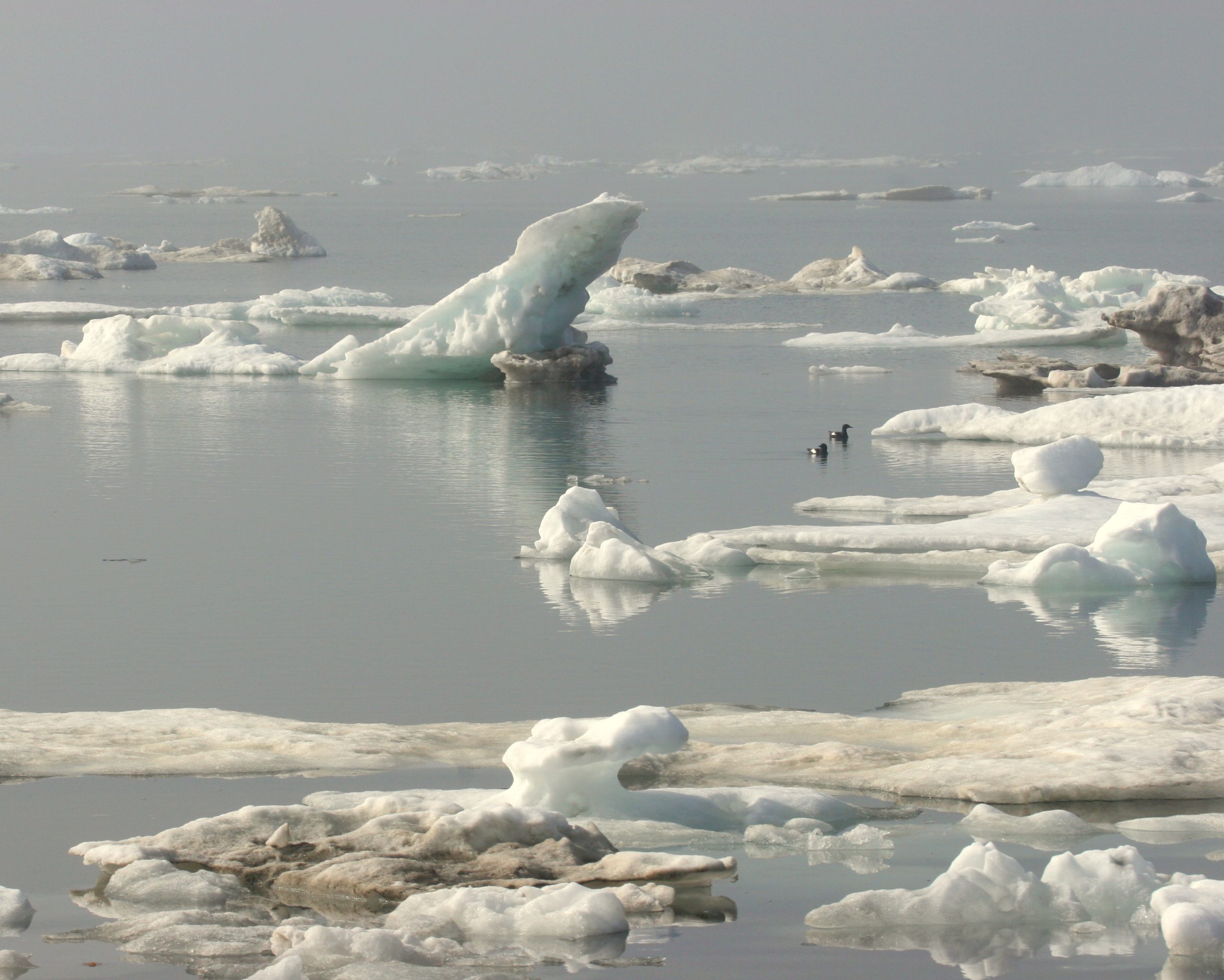August 11, 2018: Field report Hatching is finally over with one very late egg hatching today after having been incubated for 34 days; 28 days is normal. The oldest nestling is 16 days old; the chick is gaining weight and doing well like all of the other 45 nestlings. While the main pack ice is...
Category: Sea Ice
Arctic Worries: Climate change impacts communities and wildlife in the Arctic
Science writer Jenny Woodman of Proteus writes about Cooper Island research and the current field season. George Divoky frets–with good reason. In 2016, CNN Correspondent John D. Sutter called him the man who is watching the world melt. The description is as distressing as it is apt. George sends us regular dispatches from a small field camp...
Seabirds and Sea Ice
Over most of its range the Black Guillemot is a nearshore seabird, occupying coastal waters during both the breeding and nonbreeding seasons, as do other members of the genus Cepphus. Pelagic or open ocean waters can offer abundant prey resources, but these options are often distant, patchy and unpredictable. The nearshore typically offers seabirds a smaller but...
Cooper Island Research Part of SENSEI: Sentinels of the Sea Ice
In 2015 Christophe Barbraud of the Centre d’Etudes Biologiques de Chizé began assisting us with the analysis of the four-decade demographic database we have obtained from the Cooper Island Black Guillemot colony. Christophe is a highly respected avian demographer whose study species include the Snow Petrel, an ice-obligate Antarctic seabird, as well as a number of other seabirds. ...
If it’s Polar, Go Solar
Most Alaskans and others who live in bear country are familiar with the adage that provides species-specific advice on how one should react in a close encounter with a bear in the wild. “If it’s black, fight back. If it’s brown, get down.” The rhyme is premised on black bears being small enough (and, relatively,...
Trying to stay optimistic in a seabird colony that is half full – when it is really half empty
The standard and far-too-simplistic “test” of whether someone is an optimist or a pessimist is to ask if they consider half a glass of water to be half full or half empty. The major flaw in the test is that it implies a steady state situation. If the glass is being filled with water, one...
The Earliest Year
During the 1970s, in my first years in Arctic Alaska, people would talk about it being a “late year” or “early year” when discussing the timing of snowmelt, arrival of birds, flowering of plants, or the melting of sea ice. It was generally assumed one would rarely or ever see an “average year” but that over time annual...
Guillemot Early Breeding Season and New Cooper Island Publications
Fieldwork at the Black Guillemot colony on Cooper Island began in early June, where I began the fifth decade of research on a remote island in a rapidly changing Arctic. Just how rapidly that change is occurring was obvious on the first day in the field, June 11, 2015, when I discovered that egg...
Current Sea Ice Status
The Black Guillemots on Cooper Island have seen their nesting success reduced over the past four decades as sea ice decline has reduced the availability of their preferred prey. Sea ice extent in the Arctic on June 15, 2015 was 9.1 (only one decimal point) million km sq., 10 percent less than the average...

